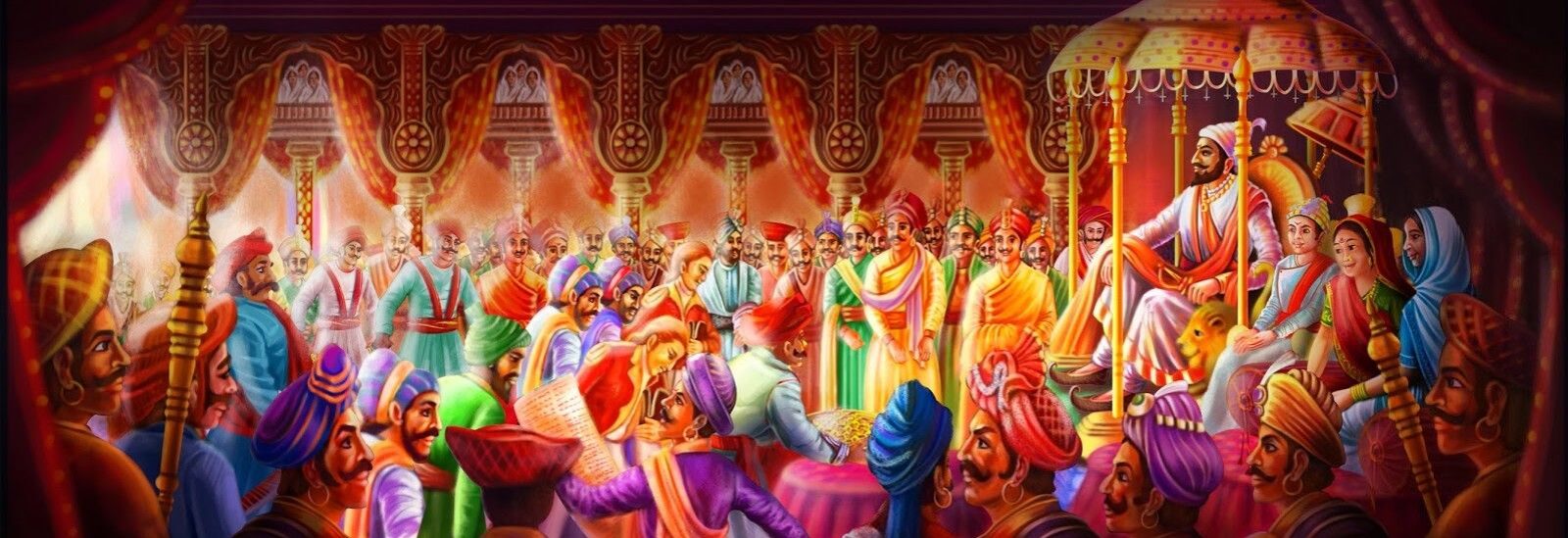After collecting the collection, the Mamaledar used to send the document of the collection calculation to the Chhatrapati. Along with the signatures of other officers, Deshmukh’s signatures were also required on those documents.
ऽ Taraf:
The upper part of the mauje is tarf or taraf. The officer on that was known as Tarafdar. Shekhdars were also officers. These officials used to go to the villages of their division and prepare the collection estimates in advance with the help of Patil-Kulkarni.
ऽ Mauje, Karyat (Villages, small Villages):
This is the smallest part of civic administration. The officers of this department are ‘Patil’ and ‘Kulkarni’. These are Patani officials and their assistants are Chaugula, Potdar and Mahar. The chavadi of the village’s Patil was the kacheri here. By order of the Patila, the Mahar used to call the farmers to the Chavadi. Potdar used to take shetsara/tax i.e. goods or money from the farmer and give it to Patil. Kulkarni used to give his receipt to the farmer. The Patil used to send all or part of the farm produce or money to Deshmukh and Deshpande through the Mahar, when it was deposited with him. They are at the main village. Deshmukh has the right to recover. Deshpande used to calculate the recovery. He was assisted by a Mujumdar as an investigator, a Phadnis for registering documents, and a Chitnis for writing the accounts/statements. Along with the amount of the shetsara, a list of the amount and from whom the shetsara was collected was sent.
Patil and Kulkarni were responsible for village protection, order and government collection. If there is a calamity or crisis upon the villages, to defend the village from it, the Shibandi of the village should gather and face the enemy; Patil-Kulkarni should pay the ransom by their own if the enemy does not surrender and starts asking for ransom from the villages. Sometimes the villages were raided and the village rose up and the villagers became disorganized and the planting/cultivating and collection in the outskirts of the village stopped. At that time the Patil should go around the village, settlement the residence of villagers and encourage them villagers to start plantations / cultivation. Patil-Kulkarni did the work of forcefully collecting the village’s revenue and taking care of visitors and guest.
Although the officers were of equal rank, their powers depended on the size of the area under their jurisdiction. He also helps the village workers in the collection work.
or goto Part I, Part II, Part III, Part VII, Part VIII, Part IX, Part X, Part XI, Part XII, Part XIII, Part XIV, Part XV, Part XVI, Part XVII, Part XVIII


Pingback: Revenue System (Part VI- Establishment) – Chatrappati Blogging
Pingback: Revenue System (Part XII – Direct Taxes) – Chatrappati Blogging